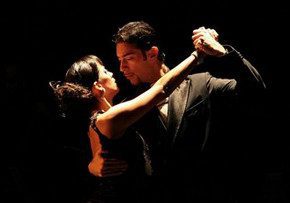How to play the harmonica? Article for beginners
Contents
The harmonica is a miniature wind organ that not only has a deep and distinctive sound, but also goes well with guitar, keyboards and vocals. It’s no wonder that the number of people wanting to play the harmonica is growing all over the world!
Tool selection
There are a large number of varieties of harmonicas: chromatic, blues, tremolo, bass, octave, and their combinations. The simplest option for a beginner would be a diatonic harmonica with ten holes. The key is C major.
Advantages:
- A huge number of courses and training materials in books and on the Internet;
- Jazz and pop compositions, familiar to everyone from films and music videos, are predominantly played on diatonic;
- Basic lessons learned on the diatonic harmonica will be useful for working with any other model;
- As the training progresses, the possibility of using a large number of sound effects that fascinate listeners opens up.
When choosing a material, it is better to give preference to metal – it is the most durable and hygienic. Wooden panels require additional protection from swelling, and plastic quickly wears out and breaks.
The most common models for beginners include Lee Oskar Major Diatonic, Hohner Golden Melody, Hohner Special 20.
Correct position of the harmonica
The sound of the instrument largely depends on the correct positioning of the hands. You should hold the harmonica with your left hand, and direct the flow of sound with your right. It is the cavity formed by the palms that creates the chamber for resonance. By tightly closing and opening your brushes you can achieve different effects.
In order to ensure a strong and even flow of air, you need to keep your head level, and your face, throat, tongue and cheeks should be completely relaxed. The harmonica should be tightly and deeply clasped with your lips, and not just pressed to your mouth. In this case, only the mucous part of the lips comes into contact with the instrument.
Breath
The harmonica is the only wind instrument that produces sound both when inhaling and exhaling. The main thing you should pay attention to is that you need to breathe through the harmonica, and not suck in and blow out air. The air flow is created by the work of the diaphragm, and not by the muscles of the cheeks and mouth. At first the sound may be quiet, but with practice a beautiful and even sound will come.
How to Play Single Notes and Chords on the Harmonica
The sound series of a diatonic harmonica is built in such a way that three holes in a row form a consonance. Therefore, it is easier to produce a chord on a harmonica than a note.
While playing, the musician is faced with the need to play notes one at a time. In this case, adjacent holes are blocked by the lips or tongue. You may have to help yourself at first by pressing your fingers on the corners of your mouth.
Basic techniques
Learning chords and individual sounds will allow you to play simple melodies and improvise a little. But in order to unleash the full potential of the harmonica, you need to master special techniques and techniques. The most common of them:
- Trill – alternation of a pair of adjacent notes, one of the common melismas in music.
- Glissando – a smooth, sliding transition of three or more notes into a single consonance. A similar technique in which all notes are used to the end is called drop-off.
- Tremolo – a trembling sound effect that is created by clenching and unclenching the palms or vibrating the lips.
- Band – changing the tonality of a note by adjusting the strength and direction of air flow.
Final recommendations
You can understand how to play the harmonica without knowing music notation at all. However, after spending time on training, the musician will have the opportunity to read and study a large number of melodies, as well as record his own work.
Don’t be intimidated by the lettering of musical sounds – they are easy to understand (A is A, B is B, C is C, D is D, E is E, F is F, and finally G is G)
If learning occurs independently, a voice recorder, a metronome and a mirror can be useful for constant self-control. Accompanying ready-made musical recordings will help you prepare for live musical accompaniment.
Here’s one last positive video for you.
Blues on harmonica



